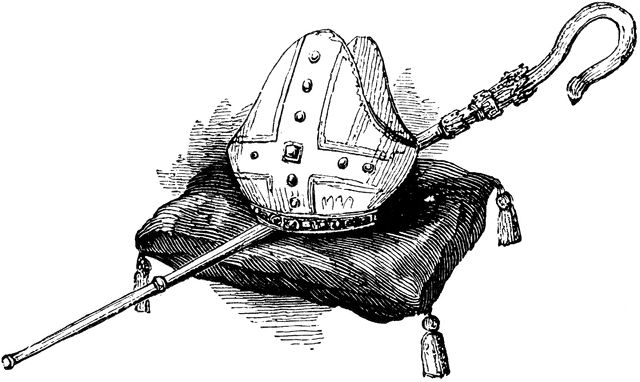In the distant south, steaming jungles vanish as rocky highlands become dominant and the climate grows cooler until the world turns in little more than sparse evergreen forests, rocks, ice, and snow. Those few clans that scratch out a life from this inhospitable land call it Arktinis, a word that translates into Common meaning something like “home” or “suffering”.
Legends say that once upon a time Arktinis was a warm land full of wild game, sweet water, and abundant berries and nuts. Whether it was a frost giant shaman’s curse or an ice-devil-haunted portal to some frigid hell, winter came to the land, and it hasn’t left since. Arktinis is truly cursed, and few travel far into its interior and return again to tell the tale. Those rare survivors bring back stories of fearsome monsters, such as trolls that breathe fire and giant furred serpents with venom that turns blood to ice. The interior is difficult to navigate, and sources of food and potable water are scarce.

Foraging & Not Getting Lost: In the interior of Arktinis, Wisdom (Survival) checks to forage and to not get lost are made with disadvantage. Should a party become lost due to a failed Wisdom (Survival) check, it takes 1d12 hours before the party’s navigator can repeat the Wilderness (Survival) check in order to get back on course.
Freezing Cold: The temperatures in Arktinis seldom rise above 0 degrees Fahrenheit for long. Whenever the temperature is at or below 0 degrees Fahrenheit, a creature exposed to the cursed cold of Arktinis must succeed on a DC 10 Constitution saving throw, made with disadvantage, at the end of each hour to avoid gaining one level of exhaustion. Creatures with resistance or immunity to cold damage automatically succeed on the saving throw, but creatures wearing cold weather gear (thick coats, gloves, and the like) do not. Creatures wearing cold weather gear must still succeed on a DC 10 Constitution saving throw to avoid gaining one level of exhaustion, but they do not suffer disadvantage when doing so.
A creature can be immersed in frigid water for a number of minutes equal to its Constitution score before suffering any ill effects. Each additional minute spent in frigid water requires the creature to succeed on a DC 10 Constitution saving throw, made with disadvantage, or gain one level of exhaustion. Creatures with resistance or immunity to cold damage automatically succeed on the saving throw.
Treacherous Footing: Slippery ice is difficult terrain. When a creature moves onto slippery ice for the first time on a turn, it must succeed on a DC 10 Dexterity (Acrobatics) check, made with disadvantage, or fall prone. Thin ice has a weight tolerance of 3d10 x 10 pounds per 20-foot-square area. Whenever the total weight on an area of thin ice exceeds its tolerance, the ice in that area breaks. All creatures on broken ice fall through.
Of course, the monsters native to Arktinis never suffer the negative effects of the region’s curse. Speaking of those monsters, those who die of starvation or exposure in Arktinis may rise again as Evils-That-Devour.

1E Stats
Frequency: Rare
No. Appearing: 1-12
Armor Class: 8
Move: 12″ (see below)
Hit Dice: 1+1
% in Lair: 25%
Treasure Type: B (x1/2), T
No. of Attacks: 3
Damage/Attack: 1-3/1-3/1-6
Special Attacks: Rake for 1-3/1-3, surprise 1-4
Special Defenses: See below
Magic Resistance: Standard
Intelligence: Low
Alignment: Chaotic evil
Size: S (3′ tall)
Psionic Ability: Nil
Attack/Defens Modes: Nil
Level/XP Value: III/52 XP + 2 XP/hp
The horrid evil-that-devours appears as an emaciated, dessicated humanoid creature the size of a young child or halfling. It moves quickly and silently, surprising targets 4 times in 6. It attacks with its claws and fangs. If both claws hit, it rakes with its back claws for two more attacks for 1-3/1-3 points of damage. The evil-that-devours moves across snow and ice at normal speed. It is immune to cold, poison, charm, and sleep.
5E Stats
Small undead, chaotic evil
Armor Class 13 (natural armor)
Hit Points 22 (5d6+5)
Speed 30 ft.
Ability Scores STR 10 (+0), DEX 15 (+2), CON 13 (+1), INT 6 (-2), WIS 12 (+1), CHA 7 (-2)
Skills Stealth +4
Damage Resistances necrotic
Damage Immunities cold, poison
Condition Immunities charmed, exhausted, poisoned
Senses darkvision 60 ft., passive Perception 11
Languages Common
Challenge 1 (200 XP)
Iceborn: The evil-that-devours treats ice and snow as normal terrain.
Actions
* Claws: Melee Weapon Attack: +4 to hit, reach 5 ft., one target. Hit: 5 (1d6+2) slashing damage.
* Fangs: Melee Weapon Attack: +2 to hit, reach 5 ft., one target. Hit: 4 (1d8) piercing damage.
* Voracious: The evil-that devours is always starving. If it hits with its bite, it grapples (escape DC 12) its target. Until this grapple ends, the creature is restrained, and the evil-that-devours cannot use its fangs on another target. The evil-that-devours can use its claws, but it makes melee attacks with disadvantage against a target other than the one it is feeding on.
While attached, at the end of each of its turn as a bonus action, the evil-that-devours cause its target to lose 4 (1d8) hit points due to blood and tissue loss (no attack roll necessary). The evil-that-devours can detach itself by spending 5 feet of its movement.
Tags: 1E AD&D, 5E D&D, monsters, OSR Christmas Calendar, places of power








